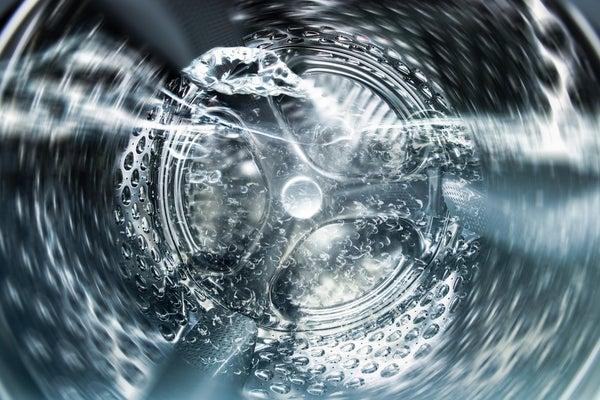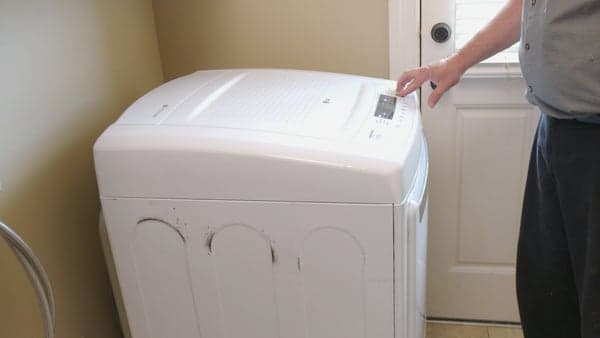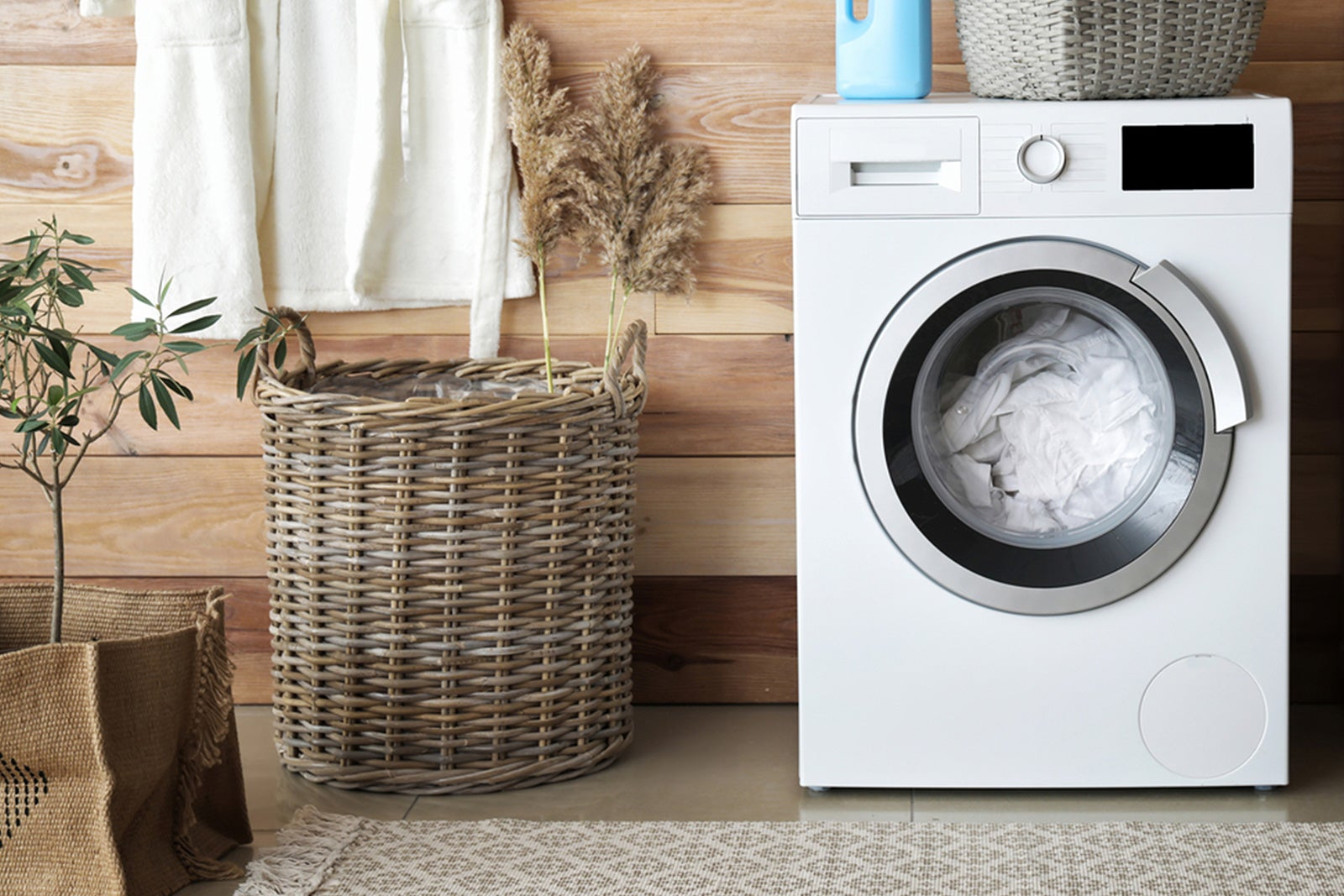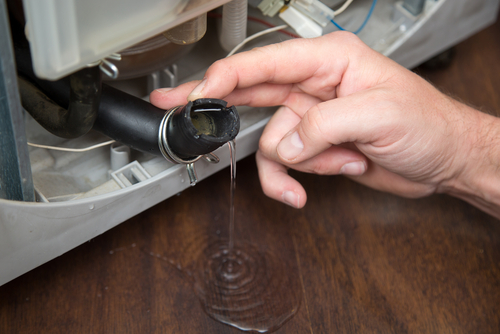Step 4: Check for and remove all clogs in the drain hose.
Once the water has fully drained out of the tub, check the drain hose for any debris, clothing, or soap blockages, all of which can make the washing machine drain clogged. To check for clogs, loosen the clamp connecting the hose to the bottom of the tub, then inspect the inside. If you see something blocking the hose or its connecting parts, remove it with the pliers, then reconnect the hose.
Step 5: Check for deeper clogs in the drain or beyond.
If your investigation shows that the drain hose is clear, that means that there may be a clog in the drain or beyond. You will likely need to use a plumber’s snake or call a professional to clear deeper clogs.
Step 6: Inspect the washing machine drain pump.
The next step is to check the washer pump to see if it has a clog, a broken belt or impeller (if you have a top-load machine), or a leak. Read through the washing machine manufacturer instructions, which should include a diagram of your unit’s drain pump location and components.
Usually, if the drain pump isn’t working properly, you’ll hear an unusual noise or notice leaking from the washing machine when it is running. If your pump is malfunctioning, you’ll need to replace it yourself or call a professional to replace it for you. If you do replace it yourself, make sure to purchase the same pump model so that it properly fits your washing machine.
Step 7: Inspect the washing machine lid switch.
Try depressing the lid switch by hand to see if it is working. If you don’t hear a click, that may indicate you have a broken switch that needs replacing.
Step 8: Inspect the washing machine belts.
If you have completed every step and still find that your washing machine won’t drain, check if damaged belts are the cause of your drain problem. The manufacturer’s washing machine instruction manual should indicate the location of the belts. To check your belts, unscrew your washing machine’s access panel and check the main belt and the pump belt. Be on the lookout for any corroded, broken, or otherwise damaged parts.
Step 9: Inspect the drain vent.
A washing machine drain vent allows air into the machine. It can help prevent the creation of a vacuum that might prevent water from draining properly from the washer. If there is a gap around the drain hose where it enters the drain, you may not need a vent. You should have a vent if local building codes require one or for proper draining if your washer is more than four feet from the vent stack.
Step 10: Use your home warranty coverage.
If you’ve followed all of these steps and your washing machine still won’t drain, it’s time to call in a professional plumber or washing machine service technician. This is when complete home warranty coverage with American Home Shield can help. With our ShieldGold™ and ShieldPlatinum™ plans, you can enjoy a washing machine warranty.
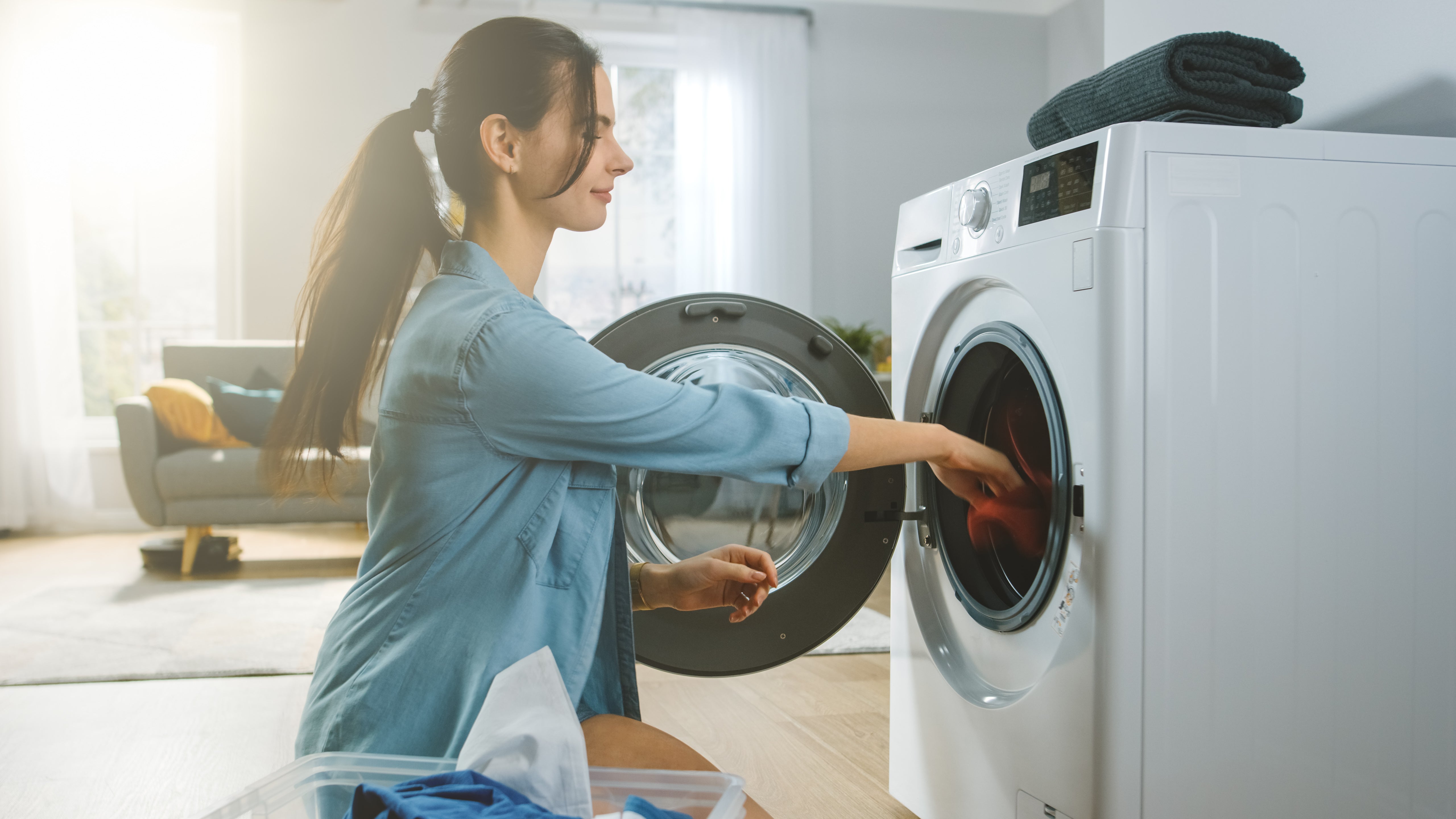
When your machine breaks down in the future, don’t pay expensive out-of-pocket costs by scheduling a repair person. Home warranty coverage helps reduce the cost of repair or replacing parts of your covered household items—and gets your home back up and running in no time. With comprehensive coverage and flexible pricing and plans, a home warranty plan with us means budget protection when your washing machine won’t drain. Learn about an American Home Shield® home warranty.
Read more about how to solve common washer and dryer problems, tips for washer and dryer maintenance, and how to know if you need a washing machine drain pan.
